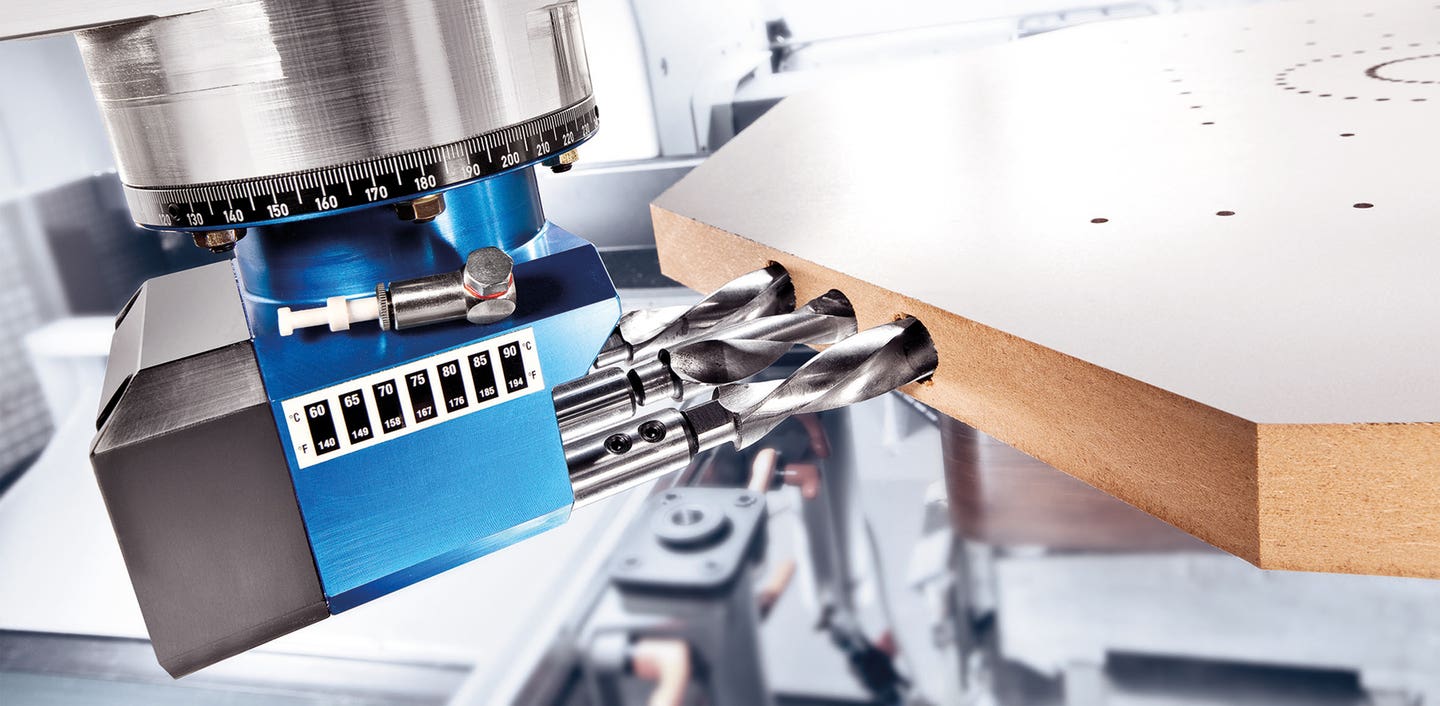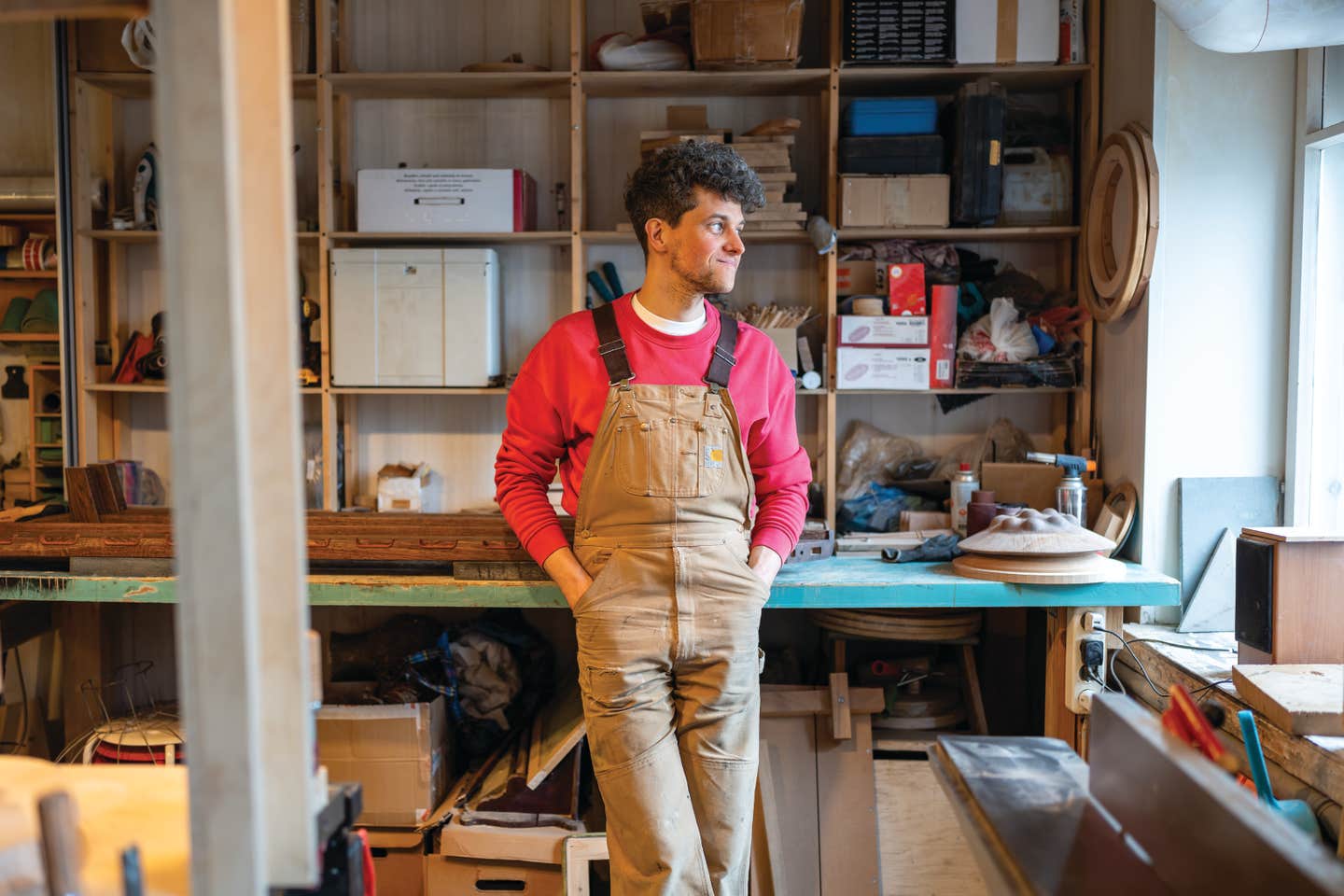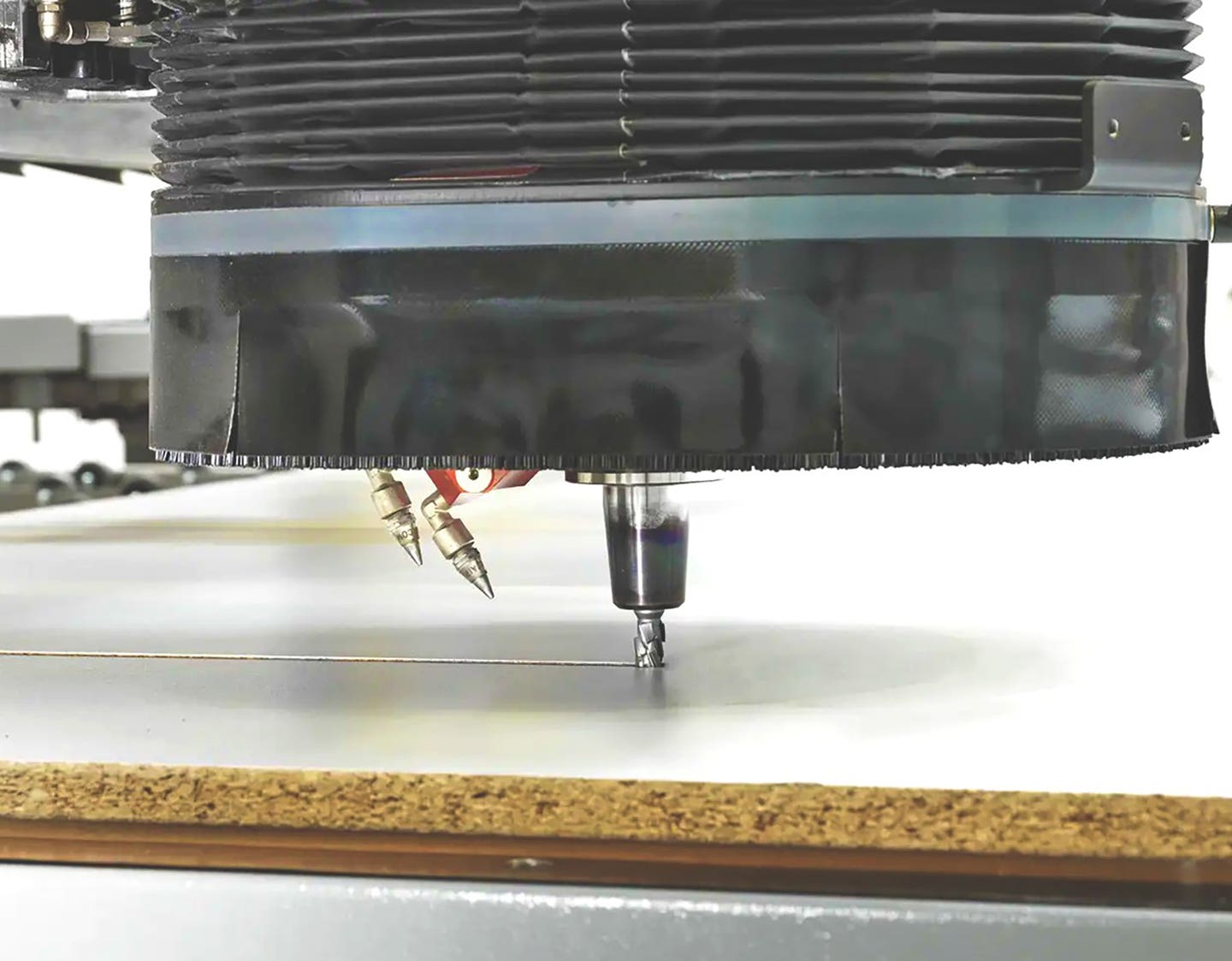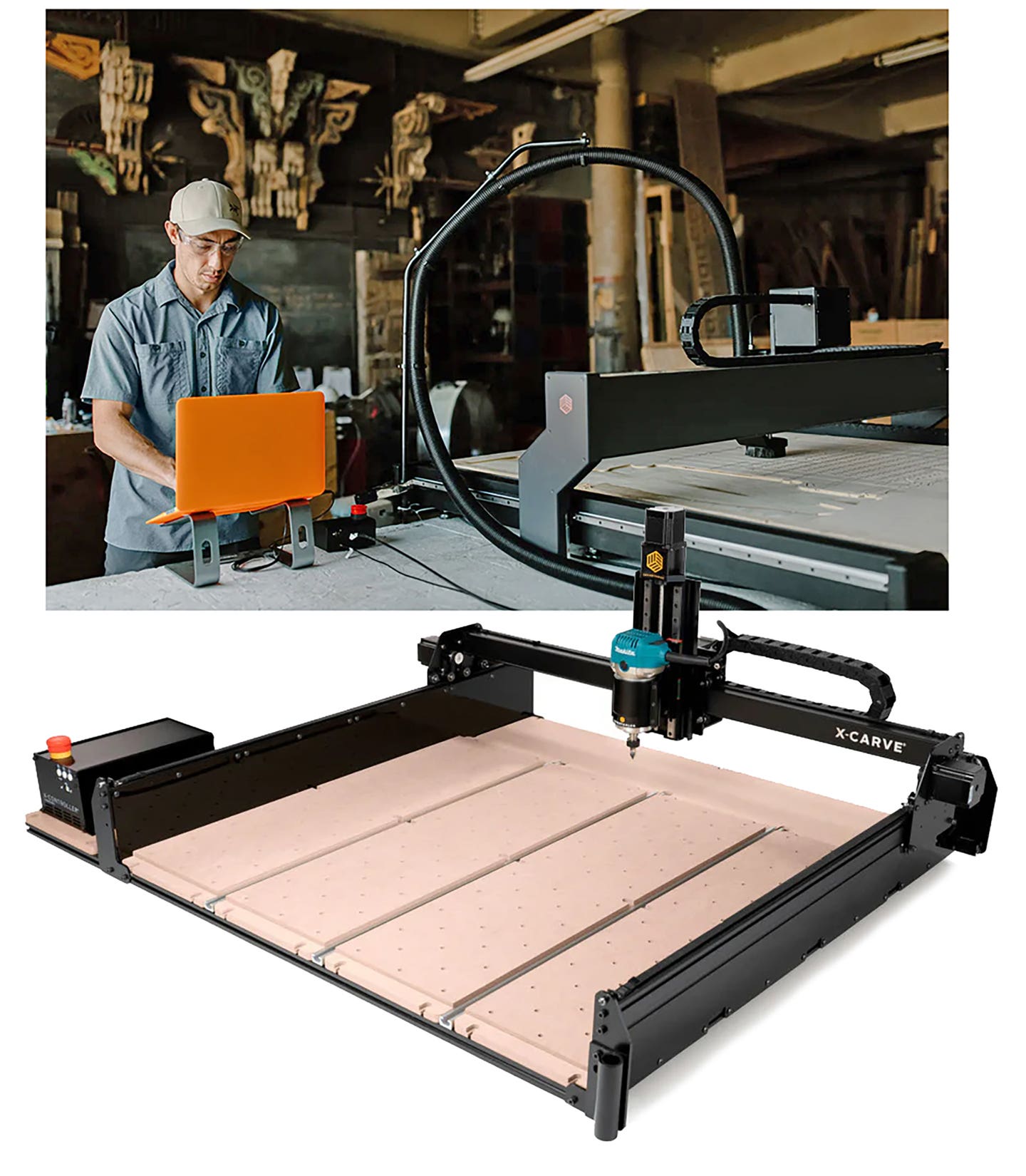Right time, right place
Architectural Woodcraft in Asheville, N.C., specializes in crafting high-quality artisan woodwork designed to complement any architectural style. Owner Craig Weis is always trying to push the limits of what can…
Architectural Woodcraft in Asheville, N.C., specializes in crafting high-quality artisan woodwork designed to complement any architectural style. Owner Craig Weis is always trying to push the limits of what can be offered to clients, handcrafting and installing cabinetry and millwork for both commercial projects and private residences.
Situated in the western part of the state, surrounded by national forests close to the Great Smokey Mountains, Asheville is a vibrant arts community rich in historic flavor that has a strong demand for Arts and Crafts designs, some of which were produced by architects of the Biltmore Estate. This has given Weis the privilege of being part of the area's revitalization since he opened up shop in 1982.
Weis' success is derived from his efforts to make challenging jobs a priority. These involve custom doors, windows and staircases - jobs that many others turn down because of their complexity. These specialty offerings have also kept the business ahead of its competition during the recent recession.
"Usually we're problem solvers. When the architect runs into a problem and can't find somebody to do a specific style or a certain aspect of a home, such as a staircase, we'll jump in and take care of it for them. I'm often more interested in the construction and engineering of something new than the bottom line, which might not be the best business goal, but seems to work for us."
Weis is fortunate to have three professional craftsmen with extensive experience in architectural restoration, historical reproduction and custom design that enable him to provide clients with what they need.
To the mountains
Weis was born in upstate New York, but called several states home during his childhood. He earned degrees in education and fine arts from Indiana University.
He moved to Asheville in the early 1980s with his wife, Kathy, and opened a restaurant, but the income wasn't enough to support a family of four. He took a second job in construction and eventually opened his first shop. Then his first big break came.
"Driving home one night, I noticed construction going on at the Manor Inn, which was first started in the late 1800s," Weis says. "The movie industry had just used it for a scene in 'The Last of the Mohicans,' which helped get a restoration project started. I presented the manager with some window samples and he hired me to restore the place. We handled all of the trim, doors, windows and duplications. After that experience, I felt pretty confident about taking on larger projects."
Although Asheville seemed more like a ghost town in the late '80s, Weis sensed a strong market for restoration work.
"There were these wonderful buildings downtown that were boarded up. After the stock market crash in the '20s, Asheville didn't have the funds to remove them. Many of the designs were from architects brought in to work on the Biltmore Estate. Prior to air conditioning, Asheville became a resort destination, having a favorable climate.
"I was fortunate to be part of restoration projects for several buildings in Asheville, such as the Basilica of St. Lawrence church, the historic Grove Arcade shopping center and the Asheville Federal Courthouse. Historic restoration was challenging and very fulfilling. I enjoyed learning how the trades did things 100 years prior. I got the opportunity to meet other woodworkers and cabinetmakers and, as Asheville grew, so did our opportunity to work on a wider variety of projects."
Clients and preferences
Weis describes Asheville as a second-home haven, meaning he's been able to tap into a fairly large pool of high-end clientele. About half of the company's work comes from local builders and architects. Word-of-mouth advertising still rules, though Weis continues to see more leads generated through his website.
When the business was new, 70 percent of the work was categorized as commercial. Now it's 70 percent residential.
Asheville residents have always preferred traditional styles to stay true to the older neighborhoods. But that's beginning to change.
"Arts and Crafts used to be a big trend in Asheville and that really is what kept me alive for a number of years. I think that because a lot of Arts and Crafts designs were high end, the economic downturn has led to more requests for modern designs, which are more simplistic and naturally cost less than ornate and traditional styles," says Weis.
Weis believes his design inspiration has been influenced by many sources, from visiting museums to trends set forth by architects, designers, periodicals and even clients.
He is enthralled with challenges that involve special engineering tasks, such as making items look old, but functional. One of the company's most exciting large-scale commercial restoration projects was re-creating the windows for Bodie Island Lighthouse in the Outer Banks region of the state. The National Park Service purchased the lighthouse from the Coast Guard to restore it.
In an effort to find these jobs, Weis maintains his connections with the local craft community as much as possible. He also has ties with several crafts organizations, including Handmade in America.
Finding the right materials for a job is another challenge. Weis prefers using reclaimed lumber or locally indigenous woods whenever possible, such as the oaks, poplar and cypress. From constructing a kitchen and bath made with reclaimed wormy chestnut walnut slabs to fabricating custom doors using reclaimed heart pine door from an old cotton mill in the state, no job is too small.
In the shop
Weis purchased and rehabilitated a 4,200-sq.-ft. shop a few years ago. The building is a former machine shop that suffered from a flood. It has given the company the capability to handle larger jobs.
"Commercial property in Asheville had become out of reach for a small woodworking company. Before the machine shop, this shop had been a race shop for Jack Ingram who has become a living legend in the racing world, where many [NASCAR] racing greats would hang out."
The staff includes shop manager Lou Gargiuolo, cabinetmakers Shane Martin and Matt Morrissey and office manager Jennifer Welch. The shop includes a Grizzly planer, 12" joiner and 18" band saw; several Festool sanders; a Woodtek horizontal borer; and a Jet, Delta and Powermatic 10" table saw.
"We don't employ CAD design or CNC at this point. We are still relying on paper and pencils and erasers. Matt came from a larger shop that had a CNC setup, which is one of the reasons he left. Mass production isn't really what we do."
The recession hit just as Weiss was making big plans for 2009. Commissions have been down considerably and the competition has been lowering its prices. Weis decided to focus on specialty work - doors, windows and staircases - that the other shops couldn't fulfill. The strategy helped tremendously.
"I think that because we are so unique and flexible in what we do we were able to stay the course. We have been fortunate to have some furniture work coming our way from a local designer, Traci Kerns at Alchemy Designs Studio in Asheville, and some longstanding relationships with local architects, as well as referrals from clients."
The company has maintained a six-month backlog for the last two years. Weis says there's potential for expansion, particularly with window work. He's also seeing an increase in timber framing in the area.
"I'm very excited about the future while enjoying the process. I'm getting to a point where I can use more of my creative freedom and not worry about every little aspect of production. Having a great team of talent that is very trustworthy makes my position much less stressful. I really don't see actually retiring when I turn 65, but hope to be still creating things and giving back in some form."
Contact: Architectural Woodcraft, 199 Amboy Road, Asheville, NC 28806. Tel: 828-258-9977. www.architecturalwoodcraft.com
This article originally appeared in the April 2011 issue.







